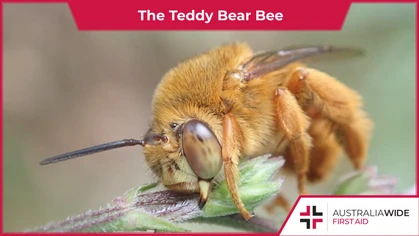5 of the Most Common Spiders in Brisbane

Bites and Stings

Many homes in Brisbane are full of a variety of different spiders, and a bite from some of them could be life-threatening. This article will help you identify five of the most common spider species in Brisbane, learn how to treat their bites, and coexist peacefully.
Many homes in Brisbane are full of a variety of different spiders, and a bite from some of them could be life-threatening. Understanding spiders in our neighbourhood is essential so we can have peace of mind in our homes. This article will help you identify five of the most common spider species in Brisbane, learn how to treat their bites, and coexist peacefully. You can get hands-on experience with spider bite first aid in our general and childcare first aid courses: Both of these first aid courses are available in our Brisbane location, and in every other state, capital city, and major town throughout Australia.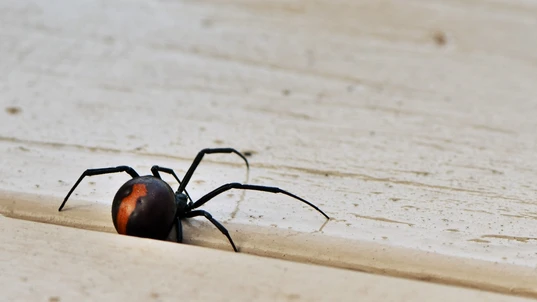
Redback spiders are one such species that are common to the South East Queensland region.
Appearance
Redback spider(Latrodectus hasselti)
- About 1cm long body
- Black or dark brown body and legs
- Red marking on the back of its body
Wolf spider (Tasmanicosa godeffroyi)
- 1-3cm long body
- 8 eyes that are in rows from 4 small eyes at the bottom row to 2 medium eyes in the middle and top row
- Black or dark brown body and legs
- Covered in brown hair
Funnel-web spider(Atracidae)
- 1-6cm long body
- 2 visible downward fangs on the front of its body
- Black or brown body and legs
- Short grey hair
Trapdoor spider(Arbanitis rapax)
- 1-5cm long body
- Brown body and legs
- Brown hairs on ends of legs
Daddy-long-legs spider(Pholcus phalangioides)
- 5-15mm long body
- Legs are 5-6 times longer than body
- Brown body and legs
- Skinny legs

The Daddy-long-legs spider is often encountered in Brisbane homes. They have a predilection for quiet, undisturbed areas, like corners, attics, and cellars.
Habitats
Redback (Latrodectus hasselti)
Redback spiders are very adaptable to their environments although they do prefer dry habitats such as deserts and sclerophyll forests, they will still find their way into urban areas where they can still thrive.Wolf spider (Tasmanicosa godeffroyi)
Wolf spiders are adaptable to their surroundings as well, although they do prefer a wet/damp environment but they can still be found anywhere from in shrublands to urban gardens.Funnel-web (Atracidae)
The Australian Funnel Web prefers moist and cool areas where they will burrow under things such as logs and rocks, and they are frequently found in urban settings.Trapdoor (Arbanitis rapax)
Trap door spiders are most often found in dry terrain where they will burrow thin tunnels that reach up to 25cm of length that they inhabit.Daddy-long-legs (Pholcus phalangioides)
The Daddy-Long-Legs spider prefers a warm and somewhat humid environment and is not suited for cold weather. This is why they are commonly found in human homes.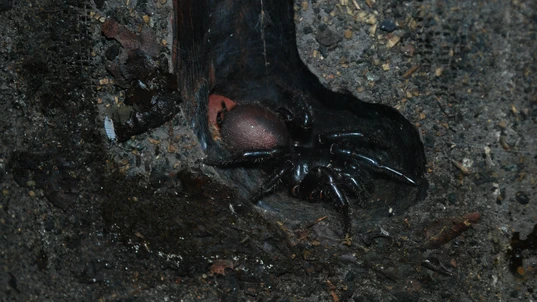
The Funnel-web spider is typically found along the eastern coast of Australia, including Queensland. They like to build their burrows in moist, cool, and sheltered habitats such as under rocks, rotting logs, or in rough-barked trees.
Behaviour
Redback (Latrodectus hasselti)
The Redback spider is a mostly nocturnal and highly venomous spider that spins a triangular shaped web. Once the redback starts its web it will most likely stay there for the rest of its life. Its web is so strong that it can hold small reptiles although they will mainly only eat small insects.Wolf spider (Tasmanicosa godeffroyi)
Wolf spiders have a very interesting hunting method, as they will burrow a hole into the ground and put one small line of webbing across the burrow. It will then wait at the entrance of the burrow utilising its colour and hair as a method of camouflage and then wait for prey such as small insects which it will then attack as it is trapped in the webbing. Also, a bite from a wolf spider would not be life threatening but should still be treated like it is.Funnel-web (Atracidae)
The Funnel-web is venomous, and a bite from one could potentially be life threatening. They also burrow underground but mostly under things like rocks and logs however in some cases they have been found in trees.Trapdoor (Arbanitis rapax)
Trapdoor spiders also make burrows. In most cases they are not territorial and will back away in the face of danger, though in some cases they will stand up and show their fangs. They will rarely go far from their burrows but they will in some rare occasions wander during the night.Daddy-long-legs (Pholcus phalangioides)
The Daddy-long-legs is capable of killing many of the most dangerous spiders to humans like Redback spiders, despite this they are still next to harmless to humans as their fangs are not long enough to inject their venom effectively. The Daddy-long-legs has many predators and some of which will simply jump on their web and attack the long-legs.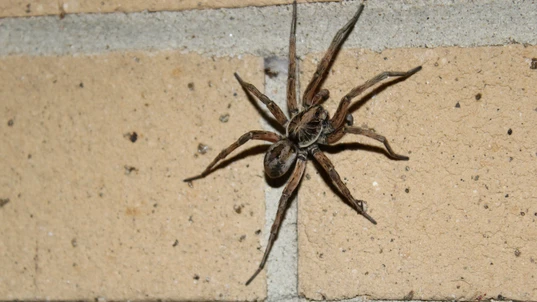
The Australian Wolf spider is commonly found in Brisbane suburban backyards. Here, they shelter in leaf litter or burrows that may or may not have a trapdoor made from pebbles, twigs, and other materials.
Addressing a Bite
If you are bitten by any spider, treat it as if it is a highly venomous bite even if you don't think it is and get it assessed by a doctor or health care professional. The correct first aid procedures can be found in our Spider Bite Identify Treat Chart.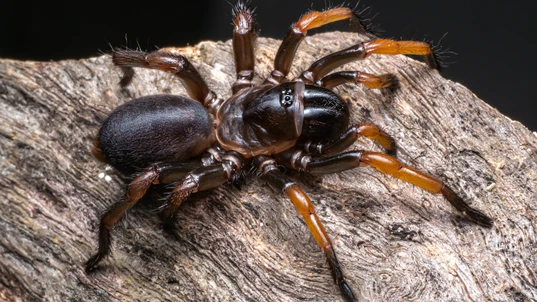
Also common in Brisbane, Trapdoor spiders are often confused with Funnel-web spiders, as both have large, dark bodies covered in hair.
Final Thoughts
No spider will go out of its way to bite or harm a human and they can actually be quite helpful to have around the house to kill insects. However if you have a large spider problem, practise spider control or engage a pest controller. To avoid a spider bite, never attempt to approach, capture, or kill a spider. For more hands-on experience with identifying and treating spider bites, head to the home page on our website and book an HLTAID011 or HLTAID012 course near you.
Originally published at
https://www.australiawidefirstaid.com.au/resources/spiders-in-brisbane
as part of the Australia Wide First Aid Articles Library






